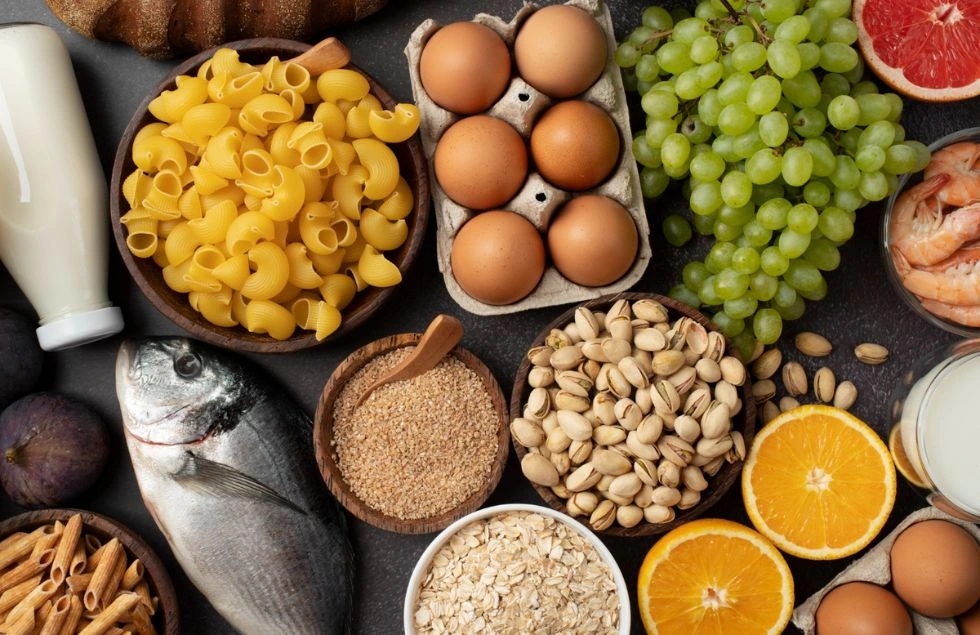In a world rife with chronic diseases, working out is the best medicine. Regular workouts massively reduce the risk of diseases like heart disease, diabetes, and obesity. It also improves mental health by reducing stress and anxiety levels.
Another problem that has riddled the modern world is lack of time. One of the main reasons people don’t workout is because they don’t get enough time to hit the gym or go for a run. That’s where HIIT workout emerges as a savior.
HIIT, also known as High-Intensity Interval Training, is a workout method that quickly burns fat, builds muscle, and improves cardiovascular health. Whether you are looking for a beginners HIIT workout for weight loss or muscle building, This guide delves into everything you need to know, including its benefits, scientific backing, types of workouts, and more.
What is a HIIT Workout?
High-Intensity Interval Training (HIIT) is a form of cardiovascular exercise that alternates between short bursts of intense activity and periods of lower-intensity recovery or rest. The primary goal is to push the body to its limits during the high-intensity phases, which increases calorie burn and boosts overall fitness levels.
History and Evolution of HIIT
The concept of HIIT isn’t new; it traces back to the early 20th century. Swedish coach Gosta Holmer developed a form of interval training known as “Fartlek,” which means “speed play” in Swedish. This method combines continuous training with interval training and is considered an early form of HIIT.
Over time, HIIT has evolved, with the Tabata protocol emerging in the 1990s as a popular, scientifically backed HIIT method. Developed by Dr. Izumi Tabata, this method involves 20 seconds of ultra-intense exercise followed by 10 seconds of rest, repeated for four minutes.
Who is HIIT Workout For?
Cardio HIIT workouts, as I said, are for people who have less time for a full gym workout. It’s for people who can workout in 30 minutes. This workout can be beneficial for:
- People who work multiple shifts
- Those who regularly travel long distances for work
- Introverts who hate socializing in the gym
- Individuals with limited workout equipment
Now that you are aware of HIIT, its history, and if it’s the right form of working out for you, let’s have a look at its advantages.
Benefits of HIIT Workouts
The benefits of HIIT extend beyond just burning calories. It offers a wide array of health and fitness benefits that make it an ideal workout for many.
For Women:-
- Improved Fat Loss: HIIT has been shown to burn more calories in a shorter amount of time compared to traditional cardio, making it highly effective for fat loss. A study compared HIIT with weight training, running, biking and other moderate intensity exercise. The study found that HIIT burnt 25–30% more calories than other forms of exercise..
- Enhanced Metabolism: The afterburn effect (excess post-exercise oxygen consumption, or EPOC) is more pronounced in HIIT, which means your body continues to burn calories even after the workout is over.
- Cardiovascular Health: Heart disease is the number one cause of women’s death in the USA. HIIT workouts for women improves cardiovascular fitness, reducing the risk of heart disease, which is particularly beneficial for women as they age.
For Men:-
- Increased Muscle Tone: The intensity of HIIT workout for men can help maintain and even build muscle, especially when combined with strength exercises.
- Boosted Testosterone Levels: Poor lifestyle has negatively affected men’s testosterone levels. HIIT can naturally increase testosterone levels, which can help in muscle development and fat loss.
- Improved Athletic Performance: The quick, intense bursts of activity in HIIT are excellent for improving endurance and speed, crucial for athletes.
How Soon Can You See Results from HIIT?
One of the most appealing aspects of HIIT is the speed at which you can see results. Due to its high intensity, many people start noticing changes in their body composition within a few weeks. Improvements in cardiovascular endurance and muscle tone are also often noticeable within a short period. However, results can vary depending on factors like diet, consistency, and individual fitness levels.
Types of HIIT Workouts
HIIT workouts are highly adaptable and can be performed using various equipment or even just bodyweight exercises. Here are 3 different ways you can start with HIIT as a beginner.
With Machines
Many people nowadays invest in HIIT cardio machines like treadmills, stationary bikes, or rowing machines. These pieces of equipment work perfectly fine for HIIT cardio.
For example, you could interval running on a treadmill for 30 seconds, followed by 60 seconds of walking, and repeat this cycle for 20 minutes.
Without Machines
No equipment? No problem!
HIIT workout without equipment include bodyweight exercises like burpees, jump squats, and mountain climbers. These exercises are effective at elevating your heart rate improving your endurance.
PRO TIP: While performing HIIT workout at home don’t work out directly on the ground or on your floor. You can workout on a yoga mat or cotton cloth.
Dumbbells, Barbells, Kettlebells, etc.
Incorporating weights into HIIT can help build muscle while still providing a cardiovascular challenge. Exercises like kettlebell swings, dumbbell thrusters, and barbell cleans and presses are excellent choices for weighted HIIT workouts.
HIIT Workout Plans
Creating a structured HIIT workout plan is crucial for achieving specific fitness goals, especially if you are a beginner.
Goals
Your goals will dictate the structure of your HIIT workout. Different goals will have a different routine. Your goals may include:
- Weight loss
- Stamina building
- Muscle building
Frequency
For most individuals, 3-4 HIIT sessions per week are sufficient. Overdoing it can lead to burnout or injury, so it’s essential to balance HIIT with other forms of exercise like strength training or yoga. Having a diverse workout routine also helps you to combat boredom.
Workouts for Different Age Groups
HIIT can be adapted for various age groups. Younger individuals might engage in more intense, high-impact exercises, while older adults might focus on lower-impact movements that are easier on the joints. If you have any heart-related problems, it is advisable to consult a fitness expert before starting intense workouts. If you are more than 50 years old it is advisable to consult a health expert before starting HIIT workouts.
Read: Healthy Aging: Best Tips for Staying Fit After 50
Diet and Nutrition for HIIT Workouts
 Source: Freepik
Source: Freepik
The rule of thumb to follow is that you must follow the 3:1 ratio of carbohydrates to protein. While carbohydrates give you much-needed energy, protein helps in muscle building and recovery. Since HIIT workouts are extremely high intensity, your body needs a healthy, balanced diet to heal and grow stronger. Aside from a protein- and carbohydrate-rich diet, you must also include healthy fats in your diet.
While pre-workout and post-workout diets are important, our focus will be on specific food items that you should be focusing on. For pre-workout nutrition, focus more on carbs, while for post-workout nutrition, include items that fulfill your protein and carbohydrate requirements.
Here is a list of different food item:-
| CARBOHYDRATES | PROTEINS |
HEALTHY FATS |
| Quinoa | Eggs | Avocados |
| Buckwheat | Meat | Olives/Olive Oil |
| Banana | Fish | Salmon |
| Sweet Potatoes | Greek Yogurt | Sunflower Seeds |
| Wheat Bread | Chia Seeds | Wall Nuts |
| Brown Rice | Chickpeas | Dark Chocolates |
Food items to avoid:-
- Food with refined sugar
- Ultra processed food items
- Too much red meat
- Packaged food
- Deep-fried food
You don’t have to avoid these items forever. I understand that you may get cravings for these ultra-delicious food items; therefore, try to limit them as much as possible. You can have cheat meals once a week or twice a month, depending on your discipline and requirements.
HIIT and Mental Health
 Source: Freepik
Source: Freepik
Almost 23% of US citizens have some form of mental illness (minor or major). Along with consulting therapists, working out is one of the most effective ways to combat mental health problems.
Multiple studies have proven that HIIT has been highly effective to help recover from depression and anxiety. The intensity of HIIT can help reduce stress, anxiety, and depression by triggering the release of endorphins, often referred to as “feel-good” hormones.
The high-intensity workout pushes our body out of our comfort zone, which forces our body to adapt and handle stress in a much better way.
Injury Prevention and Recovery
While HIIT workout plan is extremely effective for both physical and mental health, it comes with its fair share of risks. Because people work at very high intensity, there is a risk for injury, especially joint injury. Let’s discuss common risks and strategies to prevent them.
Common Injury Risks in HIIT:-
- Joint Strain: High-impact moves like jumping can put stress on your knees, ankles, and hips.
- Muscle Strains: Rapid changes in intensity or improper form can lead to muscle strains, especially in the lower back, hamstrings, or shoulders.
- Overuse Injuries: Repeating the same high-intensity exercises without proper recovery can lead to overuse injuries like tendinitis.
- Cardiovascular Stress: You risk pushing your heart and lungs too hard during intense workouts, which could lead to potential cardiovascular issues.
How to Be Cautious:-
- Warm-Up Properly: High intensity interval training workouts usually don’t last for a long time, but as the intensity is very high, you need to spend some extra time on warmup and stretching.
- Focus on Form: Prioritize proper technique over speed. One of the biggest disadvantages of HIIT workouts is that people often focus more on the stopwatch and less on the workout itself. You don’t need to be extremely rigid with the timing. You can easily increase the duration from 30 seconds to 35-40 seconds. Your primary focus must be on mind-muscle connection.
- Gradual Progression: Don’t jump into advanced HIIT workouts right away. Start with 5 minutes of exercise, followed by 10 and gradually increase your time. Directly starting with a 45 minute HIIT workout will put a lot of load on your lungs and heart.
- Listen to Your Body: If something doesn’t feel right, stop and assess. It’s better to take a break than to push through pain and risk injury.
- Cross-Training: Incorporate different types of exercise to balance muscle development and give overworked areas time to recover.
Being mindful of these precautions can help you minimize injury risks and get the most out of your HIIT workouts.
Let’s Conclude
I hope this blog will help you get started with your HIIT plan. Here’s a quick recap:
- It was started by Swedish coach Gosta Holmer, who developed a form of interval training.
- Research has backed HIIT for both physical and mental fitness.
- Anyone who has less time to workout or stays far away from the gym can start HIIT at home with or without equipment.
- Your diet must include food items rich in Carbohydrates, proteins and healthy fats.
- To prevent injuries, focus more on exercise and don’t shy away from warm-ups.
Happy HIIT-ing.
FAQs:-
1.Can beginners do HIIT?
Absolutely! Beginners can start with shorter intervals and less intense exercises. Over time, as fitness levels improve, they can gradually increase the intensity and duration of their workouts.
2. How long should a HIIT session last?
A typical HIIT session can last anywhere from 20 to 30 minutes. The key is to maintain high intensity during the active phases and keep the total workout time short but effective.
3. Is HIIT suitable for older adults?
Yes, HIIT can be modified to suit older adults by choosing low-impact exercises and adjusting the intensity levels. It’s advisable for older adults to consult with a healthcare provider before starting any new exercise program.

